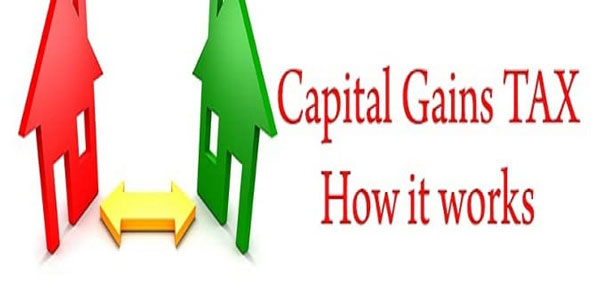The yield spread on student loan asset-backed securities (SLABS) has remained reasonably reflective of credit and liquidity problems despite the impending student loan crisis. The worry that the SLABS market will spark the next major financial catastrophe is unfounded due to the market's high credit enhancement, modest size, and minimal return comovement with stocks and bonds.
Investors should pay attention to the current public debate and policy proposals on student loans, as these can alter the landscape of student loans and consequently affect the systemic risk of SLABS. If you want to know more about Student Loan Asset-Backed Securities, this article is for you; keep reading!
What Are Student Loan Asset-Backed Securities?
Investors can enter the market for student debt through Student Loan Asset-Backed Securities (SLABS). Since billions of dollars are at risk and growing concerns over America's $1.2 trillion outstanding student debt, it's important to examine how investors allocate capital to student loans and what they hope to gain from doing so. A normal person's first impression of asset-backed security would be that it's a complicated financial product that brings to mind the financial crisis of 2008 and the movie The Big Short.
That's not completely incorrect, but it's also not completely accurate. These are typical examples of properties that can be found on the market. An investment that pays out based on revenue from some underlying asset is referred to as an asset-backed security. Although this often consists of debt, such as payments on credit cards or auto loans, they can be constructed out of virtually any kind of revenue. What people often refer to as mortgage-backed securities are the same thing.
Is Student Loan Asset-Backed Securities Safe?
Almost 45 million people in the US are behind on their student loan payments, and the combined balance of all of their loans comes to nearly 1730 billion. Student loan asset-backed securities are a type of security based on an individual's outstanding student debts (SLABS).
After that, the loans are wrapped into different securities that potential buyers (investors) can acquire. These securities operate in a manner not dissimilar to that of a standard bond in that they make coupons that are paid out at set intervals. SLABS disperses the risk lenders absorb over many investors, which is the program's core objective. When agencies combine several loans into a single pool, they wrap the loans into different securities. Lastly, they sell the securities to investors, and the agencies' exposure to the risk of loans going into default is reduced.
Because of this, the government agencies can grant a bigger number of loans of a larger magnitude. It allows a wider range of students to apply for and receive financial aid, gives investors a way to diversify their holdings, and enables lenders to generate a steady flow of revenue through debt collection and securitization.

Types of students loans
The following are the two types of students loans:
Private Loans
Private loans are unusual compared to federal loans, which most undergraduate borrowers use. In addition to qualifying for federal loans, students also have the opportunity to obtain private loans. They might even get a single statement for the combined total of both types of loans if it applies to certain circumstances. Conversely, the interest rates attached to private loans are almost always liable to change, as opposed to the maximum fixed rates attached to federal loans.
In addition, the government regulates and establishes the interest rates that apply to federal loans, but no one regulates the rates that apply to private loans. Because there is no federal guarantee protecting lenders against default (described further in this paper, beginning on page 7), private loans often come with greater expenses for the borrower.
It is one of the reasons why private loans are more expensive. In most cases, student loans—whether federal or private—cannot be discharged in bankruptcy, which means that the court will not be able to forgive the debt if the borrower files for bankruptcy protection. It offers private loan lenders some protection against default on their loans.

Federal Loans
There are two main federal loan programs: FFELP or Federal Family Education Loan Program and the William D. Ford Federal Direct Loan Program (FDLP or Direct Loan Program) (FFELP or FFEL Program). To a large extent, both schemes are equivalent in terms of the sorts of loans made accessible to students and the important parameters of those loans, such as the maximum rates borrowers may be charged. Since its inception in 1993, the Department of Education's Direct Loan Program has allowed students to get funding directly from the federal government.
Borrowers can get federal student loans from private lenders under the Federal Family Education Loan (FFEL) Program. Until 1992, the FFEL Program was known as the Guaranteed Student Loan Program, established in 1965 under the Higher Education Act. Above Exhibit 1 shows the total amount of FFELP and FDLP loans made over the past decade.
While most schools choose to take part in only one of the two programs, the Federal Family Education and Literacy Program (FFELP) or the Florida Department of Education's (FDLP) Literacy Program (LLP), some schools choose to take part in both. While many FFEL-eligible institutions maintain lists of favored lenders, students are free to work with any lender of their choosing.
Conclusion:
Despite having a significant amount of capital invested in them, student loan asset-backed securities have received relatively little attention from the general public. As more and more students in the United States take on debt to finance their education, the effects have been felt throughout the economy.
To save money or make some on the side, today's youth are delaying marriage, leasing instead of buying vehicles, renting instead of buying homes, and delving headfirst into the sharing economy.
watch next


